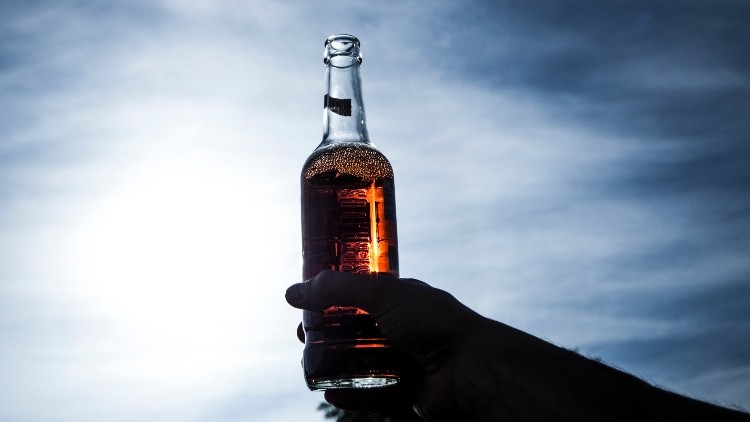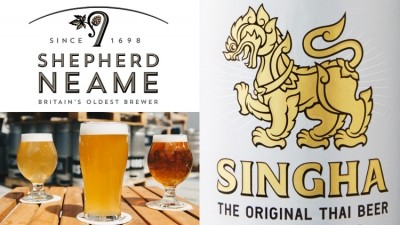Are Asian beer brands about to pour into the UK?

Brand Finance’s annual report on the world’s 25 strongest and most valuable beer brands revealed that despite AB InBev continuing to dominate the list with 11 of the world’s 25 most valuable beers – the five brands with the biggest value change over the past 12 months were all from Asia.
Though BrewDog broke into the 25 most valuable brands for the first time this year, Hong Kong-based Snow saw its value soar by 51.8%, with China-based Tsingtao and Harbin witnessing 48.9% and 46.4% respective changes in value.
What’s more, Japanese brands Kirin and Sapporo saw values spike by 45.4% and 31.6% respectively with Thailand’s Chang increasing in value by 27.8% in the past year.
Off the back of this, Brand Finance’s CEO David Haigh argued that these rapidly growing brands could start making serious in-roads beyond the Asian market.
“If these brands begin to expand beyond China and into new markets, we could potentially see some very stiff competition to established western beer brands,” he explained.
Growing Chinese middle class
“At a consumer level, this is a similar story to many consumer goods and fast-moving consumer goods (FMCG) across Asia, and in particular China,” Henry Farr, senior analyst at Brand Finance explained.
“We are seeing a growing middle class, rising disposable income, a greater acceptance and curiosity of western culture and practices. This translates into an increasing number of bars and restaurants which, in turn, are more willing to stock these growing beers.
“As these Asian breweries grow in size, they gain further capacity to expand and challenge the incumbents in western markets.”
Farr adds that rather than this being a wholly new phenomenon, the growth of Asian beer brands mirrors similar movements in industries such as automobiles.
“What is interesting here is that whereas the rapid growth in Chinese automobile demand started with the import of western cars prior before domestic brands began to enter the fore,” he explained. “Here we see Chinese brands making their mark early in the life of the industry in this region through brands such as Harbin, Snow, Tsingtao.”
Discussing Chinese brand Tsingtao’s recent growth, brand manager Angus Lawrie added: “Tsingtao has enjoyed substantial growth in recent years with the brand now being available in 100 countries worldwide. This is due to consumers seeking authentic premium world beer brands out with the confines of Europe and the US.
“As well as being a traditional favourite beer enjoyed when dining in Asian restaurants, consumers are now seeking truly global flavours across the on and off-trade, including premium bars and mainstream supermarkets.
“We are looking forward to continuing to grow in the coming years by investing substantially in Tsingtao.”
Making an impact in the UK
Farr adds that while many UK beer drinkers would struggle to name an Asian beer beyond the likes of Asahi, Chang, Cobra and Tsingtao at present and that increased presence won’t necessarily see these brands take off in UK pubs and bars.
“It is likely that exposure of Asian beers in UK pubs, bars, etc, will increase but this does not necessarily transfer into a large uptake in demand,” Farr explained.
“Though interest in new beers has rarely been higher in the UK beer market than it is now, this interest is largely founded in craft and non-alcoholic beers.
“A large challenge for Asian breweries will be identifying a USP to rise above the crowd in the eyes of consumers to an already crowded market.”
Yet Farr believes that despite potential difficulties in finding a niche, western brands need to take note of the recent growth of Asian brands.
“Despite saying above that they may struggle, western incumbents will ignore the incoming Asian beer behemoths at their peril on account of their large resources and low-cost margins,” he added.
“This has clearly been recognised by AB InBev, which has long had a presence in Asian markets.”
In addition, following from Asahi’s £250m acquisition of Fuller’s brewing arm and Japan-based Kirin-owned Lion buying UK craft brewer Magic Rock – Farr believes mergers and acquisitions could offer Asian brands an alternative route into the UK market.
“This was a very wise move by Asahi, offering them both distribution operations and local expertise,” he added.
“It is likely we see more such mergers over the coming years – both Asian companies buying into western competitors and vice versa.”
Growth through food-led premises
According to Louise Fleming, head of consumer marketing at Marston’s, it’s most likely that Asian beer brands will enhance their UK presence in food-led environments first and foremost.
She highlights that Kirin, for example, has seen strong growth in more premium, specialist venues and alongside the increasing popularity of Japanese food in the UK.
Speaking after the publication of Marston’s On-Trade Beer Report 2019-2020, Fleming explained: "World beer is the fastest growing segment of lager. At the moment, in the UK, that growth is predominantly coming from Mediterranean brands including the likes of Estrella Damm, but we do see growth in this area.
“It’s tough because there is quite a lot of brand loyalty within lager, but as we’ve seen with the growth of craft and world beer, and the desire of the consumer to premiumise, I'm sure it will increasingly grow – there are always new brands entering what is a global market out there.”






